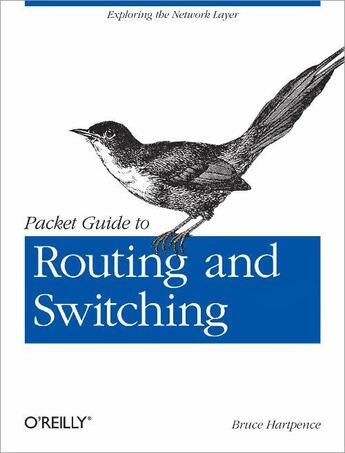Des idées de lecture pour ce début d'année !
Passionné(e) de lecture ? Inscrivez-vous
gratuitement ou connectez-vous pour rejoindre la
communauté et bénéficier de toutes les fonctionnalités du site !

Go beyond layer 2 broadcast domains with this in-depth tour of advanced link and internetwork layer protocols, and learn how they enable you to expand to larger topologies. An ideal follow-up to Packet Guide to Core Network Protocols, this concise guide dissects several of these protocols to explain their structure and operation. This isn´t a book on packet theory. Author Bruce Hartpence built topologies in a lab as he wrote this guide, and each chapter includes several packet captures. You´ll learn about protocol classification, static vs. dynamic topologies, and reasons for installing a particular route. This guide covers: Host routing-Process a routing table and learn how traffic starts out across a network Static routing-Build router routing tables and understand how forwarding decisions are made and processed Spanning Tree Protocol-Learn how this protocol is an integral part of every network containing switches Virtual Local Area Networks-Use VLANs to address the limitations of layer 2 networks Trunking-Get an indepth look at VLAN tagging and the 802.1Q protocol Routing Information Protocol-Understand how this distance vector protocol works in small, modern communication networks Open Shortest Path First-Discover why convergence times of OSPF and other link state protocols are improved over distance vectors
Il n'y a pas encore de discussion sur ce livre
Soyez le premier à en lancer une !

Des idées de lecture pour ce début d'année !

Si certaines sont impressionnantes et effrayantes, d'autres sont drôles et rassurantes !

A gagner : la BD jeunesse adaptée du classique de Mary Shelley !

Caraïbes, 1492. "Ce sont ceux qui ont posé le pied sur ces terres qui ont amené la barbarie, la torture, la cruauté, la destruction des lieux, la mort..."